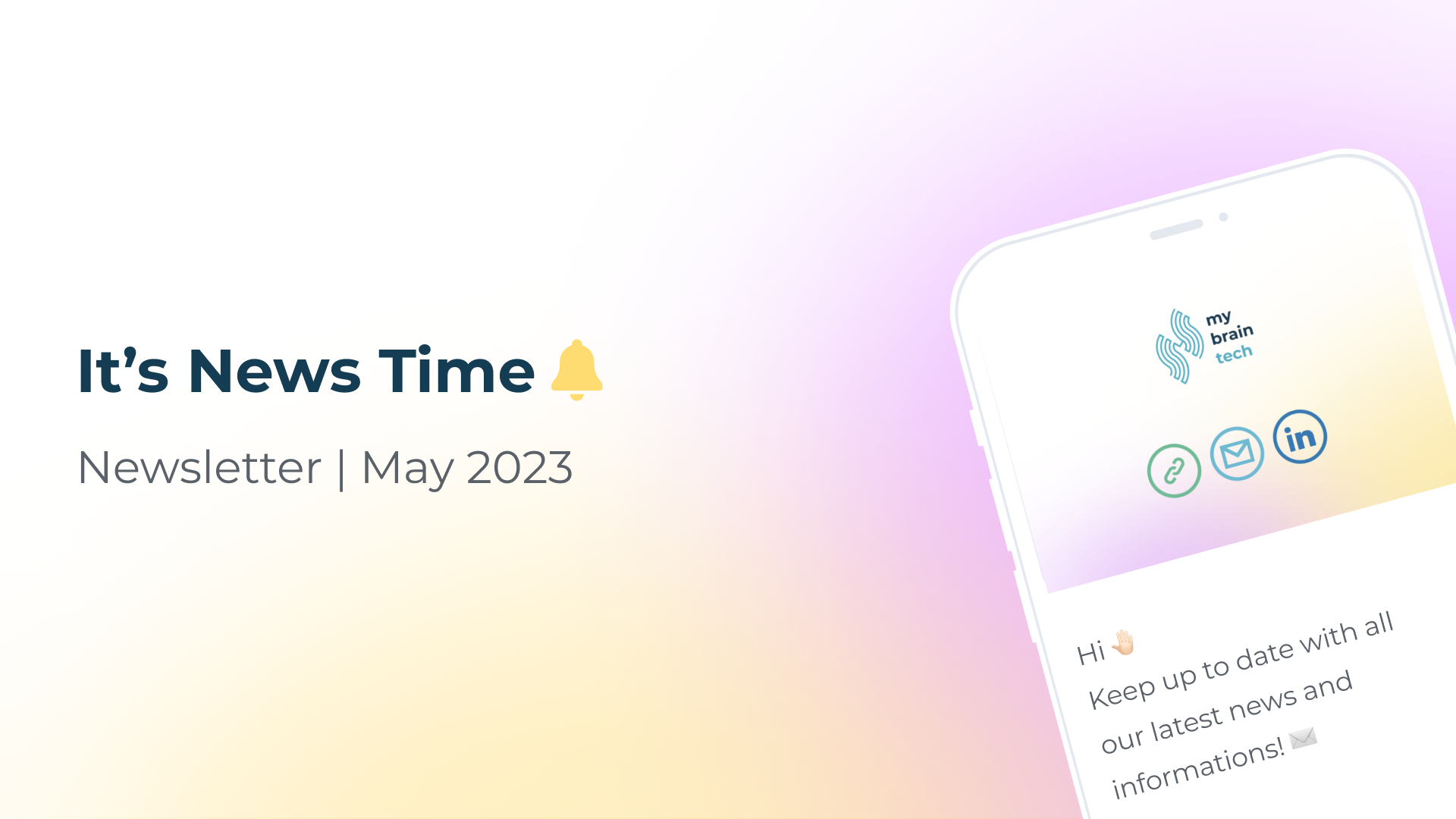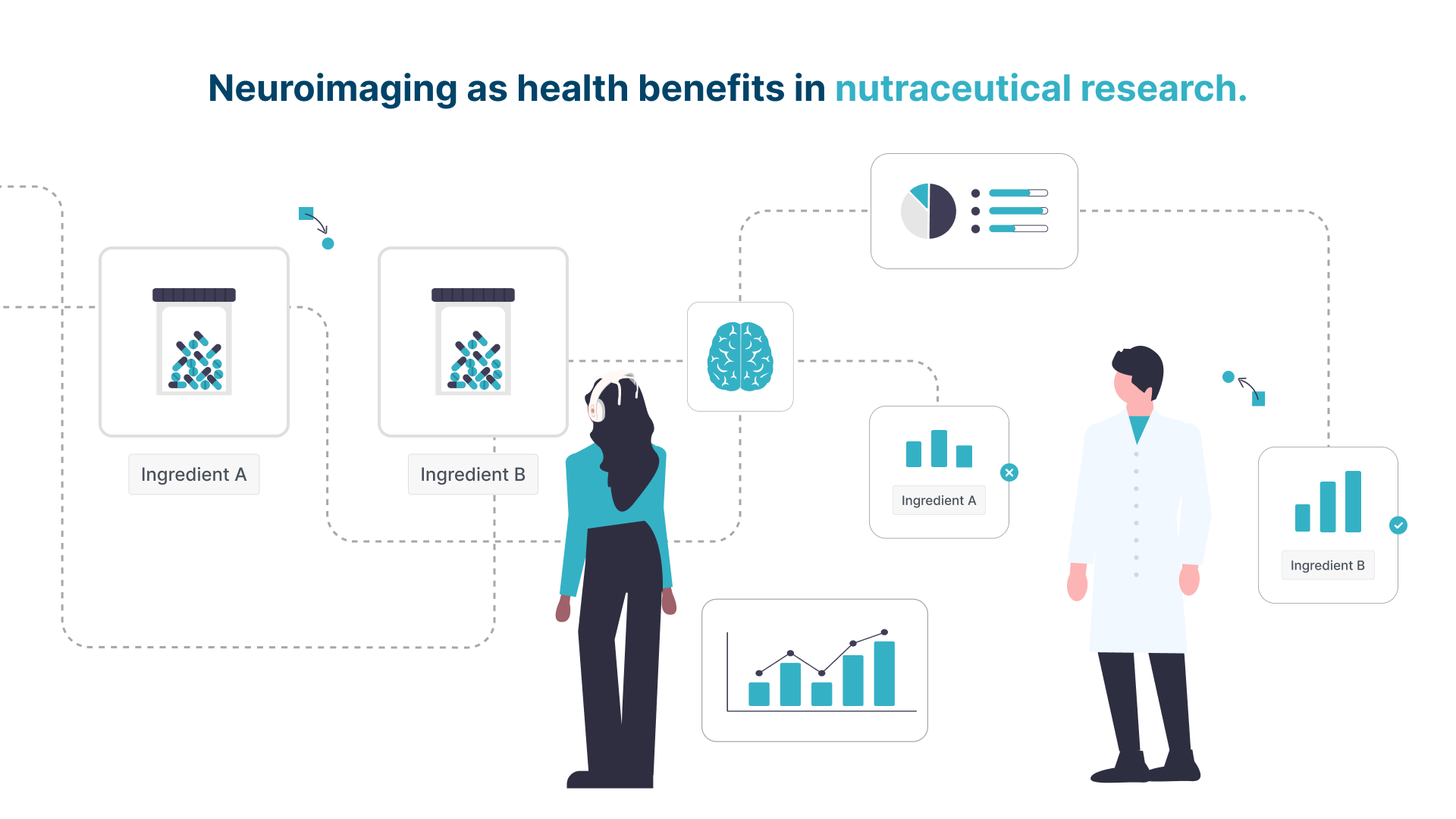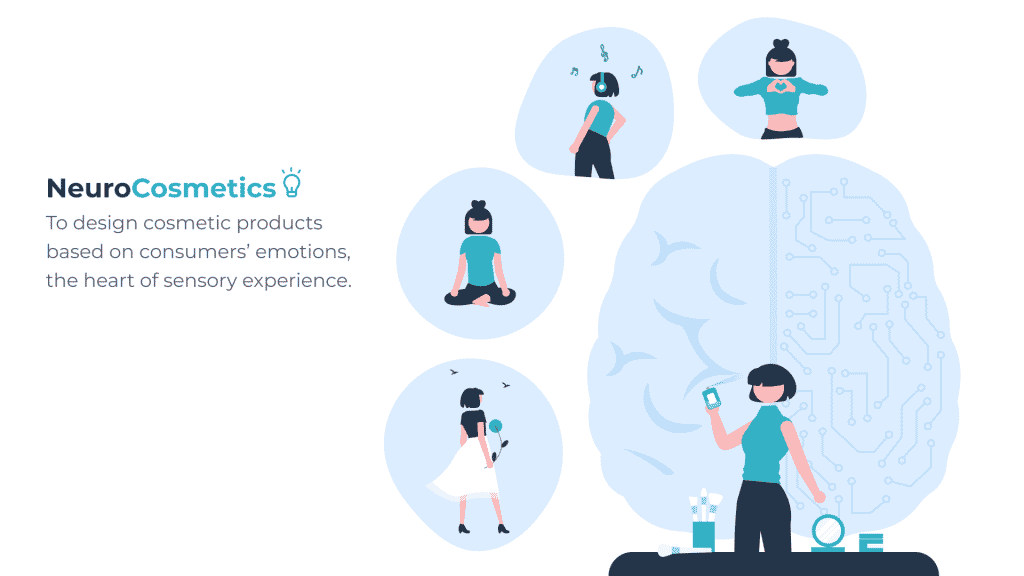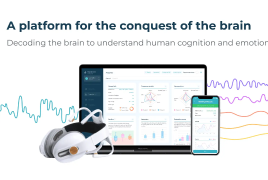Neuroergonomics: towards a new paradigm of product design.
Neuroergonomics: towards a new paradigm of product design.
Feb 14, 2022 • 5 min read • Download article
Neuroergonomics provides a multidisciplinary approach that merges elements of neuroscience, human factors, and ergonomics to study brain response to stimuli. It is a research field that investigates the human brain functions whether through perceptual, cognitive, or emotional brain data and tests them in natural environments and everyday settings.
The main goal is to utilise new types of neurotechnologies in order to create better symbiosis between a product itself, the human experience, and its environment.
Neurotechnological tools to optimize the symbiosis between product and human experience.
The manufacturing chain of product development is currently being revolutionized, from the conception level to measuring the impact of a product that is already on the market, and so opening real world evidence. Neurotechnology companies combine neuroscience with hardware acquisition and sometimes artificial intelligence to develop or assess innovative products.
Traditionally the conception level of product development relies on subjective data. In order to measure the potential biases of the real life experience of consumers, manufacturers rely on questionnaires of sample populations. These subjective questionnaires cannot give deep insight into the actual cognitive and emotional feedback of human experience. Neuroergonomics, as a complementary tool, measures the response to a product at the brain level.
New types of neurotechnological tools are currently being developed to investigate users behavior in natural environments and everyday settings. There exists several types of devices for brain imaging, the most cost/efficient one being for neuroergonomics, EEG.
Today many wearable headsets integrate EEG based-neuroergonomics tools that are portable, non-invasive and provide high temporal resolution of brain activity. This makes them suitable to measure a number of phenomena and constructs that are relevant to assess the cognitive and emotional response to a product in relation to its environment.
These new tools can inform manufacturers at various parts of the production chain. Both physical and social components are at the center of product conception. A successful design is strongly dependent on the human confluence and interaction with a product.
At the end of the manufacturing chain, once a product is finalized, these wearable headsets could potentially interpret EEG signals in a basic way to describe comfort levels for users and then use the information to test and optimize the ergonomic design of the product.
The main goal of neuroergonomics is to be human oriented, in order to create a machine that improves symbiosis between human experience and product design. Neuroergonomics uses objective data to analyse a product in relation to its environment and measure the cognitive and emotional response of the consumer in real life settings. These tools will help individuals and businesses adapt and optimise their processes and shape the future of manufacturing.
Neuroergonomics offers insights into the real life study of the cognitive and emotional response of a product. The interpretation of brain signals which describe the mental state levels of the users can be used to test and optimize the ergonomic design of spaces.
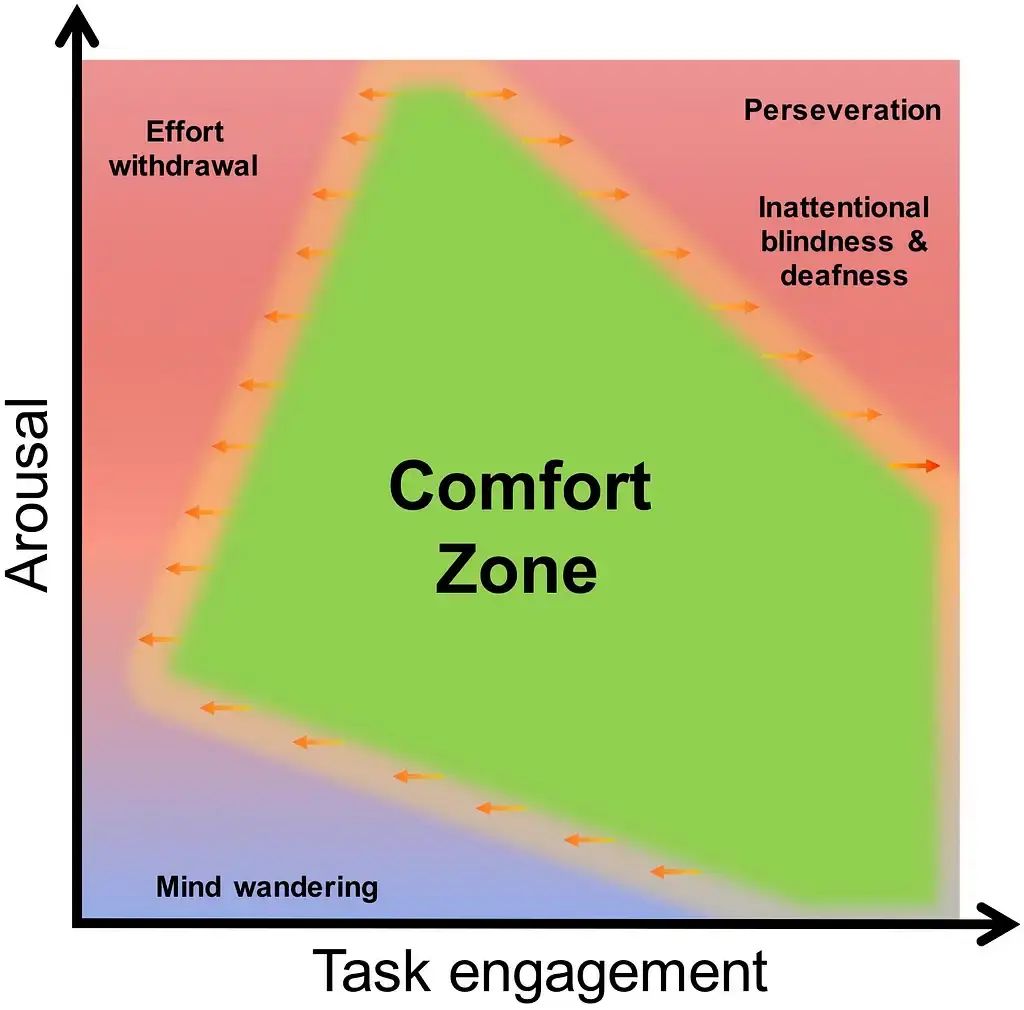
In the figure below the green zone conceptually describes the operator’s “comfort zone” where performance is optimal. The degraded mental states are mapped across a “task engagement” axis and an “arousal” axis. The authors’ review identified a number of suboptimal cognitive states predictive of degraded performance such as : perseveration, mind wandering and effort withdrawal, inattentional blindness and deafness. Interestingly, the designer could use the human response to stimuli in a real life setting to avoid these pitfalls in order to optimise performance.
Numerous industries have already started using neuroergonomics in conception strategy and consumer behavioral analysis. These two processes are located respectively at the beginning and at the end of the manufacturing chain. Measuring the cerebral and corporal impact of a product in real world conditions is key in these two phases.
Neuroergonomics in the Automobile Industry.
The Automobile Industry is a pioneer in using neuroergonomics. Many companies are investing great efforts in innovative designs and technologies to improve the efficiency of its products.
Behavioural modeling or Artificial Intelligences help in revealing opportunities, optimizing ideas and testing concepts quickly and cost-effectively upstream in the innovation process. This is particularly true for the firms that design and build automotive equipment, seats and systems combined with seats. Neuroergonomics solutions are able to provide information on the comfort levels of consumers in order to improve customer experience and inform the development of new products.
These visionary players, such as Faurecia, a global leader of the automotive equipment market, use neuroergonomics to improve comfort and safety. Latest generation EEG wearable sensors record the resting state and the thermic stress of the driver which informs the advanced thermoregulation system of increasing temperature (Breton & al. 2019)[2].
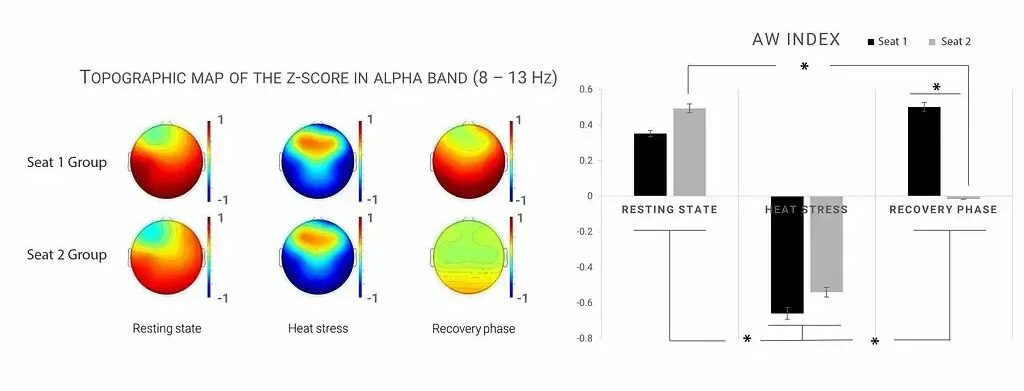
The oscillatory brain pattern associated with modulations of thermal comfort sensation are used to evaluate the efficiency of two different ventilating systems in restoring an optimal level of thermal comfort. The recorded EEG signal shows that distinct EEG-based indexes are directly correlated with the thermal comfort modulations. Eighty-eight participants are included in this study and are associated either to the Faurecia’s or to the competitor’s ventilating system. EEG data is collected using a wireless EEG headset composed of eight dry electrodes, built by myBrain Technologies.
Psychometric results indicate that temperature perception, comfort sensation and awareness level are modulated by temperature. At the electrophysiological level, oscillatory components in different frequency bands are influenced by the thermic conditions and the ventilating systems. During the heat stress phase, power in the theta band increases and participants display longer reaction times (RT) in the Go/NoGo task.
As seen in the figure above, we observe the opposite dynamic for the Approach Withdrawal index (AW) – reflection of the alpha band, which was sensitive to the ventilating system used and decreased reaction times (RT) for safer and more comfortable driving. From an industrial point of view, this research reveals the positive impact of its system on the thermal comfort of seat occupants under thermic stress conditions.
Neuroergonomics in the Aviation Industry.
The aviation industry has also been using the latest available EEG technology to improve safety and optimise performance. Neuroergonomics is a key factor in shaping the Cockpit of the Future.
A cockpit is a highly sensitive area, where attention and mental workload have to be optimized. Neurophysiological techniques have been demonstrated to be able to assess mental workload of humans with a high reliability, even in operational environments (Mühl & al., 2014[3] ; Borghini & al., 2015a[4] ; Di Flumeri & al., 2015[5]).
One of the most studied mental states is the Mental Workload (MWL), due to its strong relationship with the user’s performance variations. MWL is a complex construct, generally defined as the actual task cognitive demand related to the real cognitive capacity of the operator (O’Donnell & Eggemeier, 1986)[6]. Many neurophysiological measures have been used for the mental workload assessment, including Electroencephalography (EEG).
Several studies, in particular in the aviation domain, have developed efficient EEG-based mental workload indexes. The preliminary results of Brookings et al. (1996)[7] showed that the effects of the task demand were evident on the EEG rhythms variations. EEG power spectra increased in the theta band, while significantly decreased in the alpha band as the task difficulty increased, over parietal and frontal brain sites.
Latest EEG sensor studies have shown an inverse relationship between Adaptive Automation and Workload EEG. Adaptive automation refers to the process of entirely or partially allocating activities constituting a task usually performed by a human, to a machine, or a system. The Workload EEG refers to the measured brain activity index of a user during a difficult task.
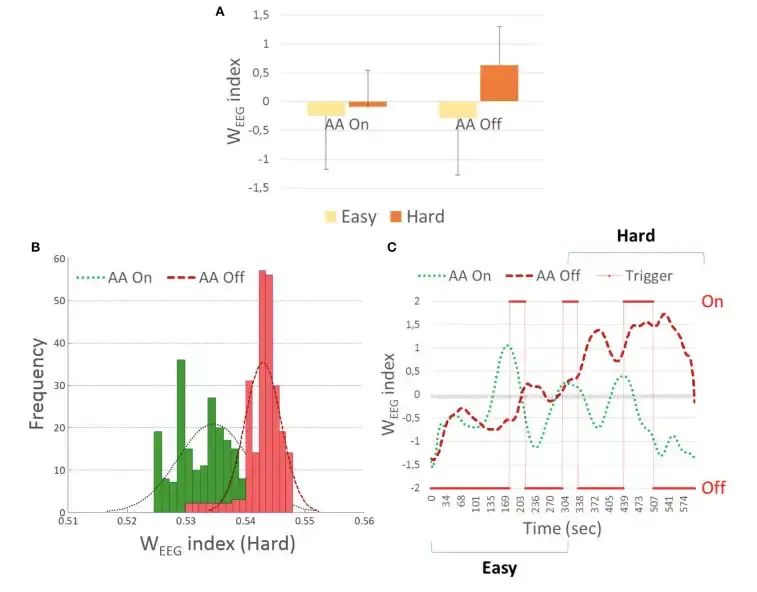
In the Figure below, the vertical bars of the neurophysiological workload index distributions (WEEG) are related to the Easy and the Hard slots, during the conditions AA On and AA Off . The figure suggests that when the AA is activated, the WEEG index related to the AA On condition decreases accordingly. In the cockpit of the future, adaptive automation will play an integral part in supporting the pilot, activating the automation solutions significantly decreases the mental workload experienced by the users.
In conclusion.
Neuroergonomics has huge transformational potential which ranges across industries. Measuring the EEG activity of a consumer in real life conditions has been a dream of manufacturers.
Beforehand, they had to rely only on subjective data to design a product. Neuroergonomics gives insight into the immediate reaction of the brain in natural environments. The manufacturing chain of any product will be modified and optimized from the conception strategy to measuring the impact of a finished good.
Neuroergonomics has applications in industries where humans operate complex and critical tasks. This is the case for numerous industries such as automotive, aviation, cosmetics or healthcare industries. Whether to create more comfortable seats or to measure the mental workload WEEG of a pilot, neuroergonomics can be used to create more efficient products in better symbiosis with human experience. These new tools, if used in the right way, are about to revolutionize industrial services and product design.
References.
[1] Dehais, F., Lafont, A., Roy, R., & Fairclough, S. (2020). A Neuroergonomics Approach to Mental Workload, Engagement and Human Performance. Front. Neurosci. 14:268. doi: 10.3389/fnins.2020.00268
[2] Breton, A., Ronca, V., Mallet-Dacosta, A., Longatte, F., Servajean-Hilst, R. & Attal, Y. (2019). Identifying the neural signature of thermic comfort sensation: neuroergonomic evaluation of a new ventilating system integrated in car seat. Conference Abstract: 2nd International Neuroergonomics Conference. doi: 10.3389/conf.fnhum.2018.227.00008
[3] Mühl, C., Jeunet, C., & Lotte, F. (2014). EEG-based workload estimation across affective contexts. Front. Neurosci. 8:114. doi: 10.3389/fnins.2014.00114
[4] Borghini, G., Aricò, P., Di Flumeri, G., Salinari, S., Colosimo, A., Bonelli, S., & al. (2015a). Avionic technology testing by using a cognitive neurometric index: a study with professional helicopter pilots. Conf. Proc. IEEE Eng. Med. Biol. Soc. 2015, 6182–6185. doi: 10.1109/EMBC.2015.7319804
[5] Di Flumeri, G., Borghini, G., Aricò, P., Colosimo, A., Pozzi, S., Bonelli, S., & al. (2015). “On the use of cognitive neurometric indexes in aeronautic and air traffic management environments,” in Symbiotic Interaction, eds B., Blankertz, G. Jacucci, L. Gamberini, A. Spagnolli, and J. Freeman (Cham: Springer International Publishing), 45–56.
[6] O’Donnell, R. D., & Eggemeier, F. T. (1986). “Workload assessment methodology,” in Handbook of Perception and Human Performance, Volume 2. Cognitive Processes and Performance, eds K. R. Boff, L. Kaufman, and J. P. Thomas (New York, NY: John Wiley and Sons, Inc.), 42-1–42-49.
[7] Brookings, J. B., Wilson, G. F., & Swain, C. R. (1996). Psychophysiological responses to changes in workload during simulated air traffic control. Biol. Psychol. 42, 361–377.
[8] Aricò, P., Borghini, G., Di Flumeri, G., Colosimo, A., Bonelli, S., Golfetti, A., Pozzi, S., Imbert, J. P., Granger, G., Benhacene, R., & Babiloni, F. (2016). Adaptive Automation Triggered by EEG-Based Mental Workload Index: A Passive Brain-Computer Interface Application in Realistic Air Traffic Control Environment. Front. Hum. Neurosci. 10:539. doi: 10.3389/fnhum.2016.00539
Related Articles
Get in touch
We are glad you are interested in reaching out to us. Whether you have a question about our products or want to give us feedback, we are here to help.

